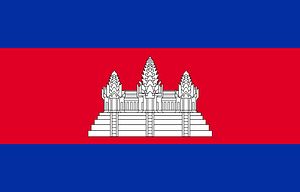On a hot day nine years ago, on the sidelines of an ASEAN summit in Phnom Penh, an important meeting took place.
Cambodian Prime Minister Hun Sen complained about the heat and apologized about the faulty air-conditioning as he sat down with then-Chinese Premier Zhu Rongji. ‘I like it hot,’ China’s number two famously said. He then wrote off Cambodia’s entire debt, largely a legacy of the Khmer Rouge and the years of Cold War power plays, totaling about $2 billion.
The meeting was a high point in Sino-Cambodian relations, and the signing marked the beginning of a new era. China had leaped over Russia for influence in one of its old spheres and was preparing to challenge Western countries that had established themselves in Cambodia during its early years of peace.
In a regional context, Cambodian diplomacy has often been labeled a sideshow, overshadowed by its larger neighbours Vietnam in the east and Thailand to the west. But its initial dalliance with China after independence in 1953 allowed Phnom Penh to punch above its weight throughout much of the 20th century and deal with an irritating pincer move from its flanks.
This relationship blossomed as the country’s leading monarch Norodom Sihanouk engaged and entertained Chinese ambitions in Southeast Asia as a counterbalance to the Cold War hegemony being extended by the Soviet Union and the United States in Indochina.
But the broader impact had disastrous consequences. Forty years of conflict, including the reign of the Khmer Rouge, left the country in tatters, a situation from which it’s still recovering. Throughout, Sihanouk maintained a close friendship with Chinese leaders, including Mao Zedong, Zhou Enlai, Deng Xiaoping and Jiang Zemin.
The retired king still spends several months of the year in Beijing for medical tests, rest and recreation.
However, it was the end of the Cold War detente that heralded China’s economic rise and a resurgence of interest in the southern lands. Beijing has a long-standing enmity with Hanoi and has never boasted a great friendship with Bangkok.
Cambodia, with its deep water port at Sihanoukville, provides an ideal wedge between Thailand and Vietnam for Chinese expansion. Importantly, Western countries—notably the United States, Australia, France and Britain—that had carved out a niche through generous foreign aid packages were increasingly alienating themselves by attaching conditions to spending policies in Cambodia. Corruption is endemic there, and a constant sore point with ambassadors in Phnom Penh and their governments back home that need explanations for misspent taxpayer dollars.
Such conscientious objections have no place in Chinese foreign policy, which takes a non-interference stand with its neighbour’s affairs. Cambodians appreciate this.
Soft loans and ambitious infrastructure projects that include coal-fired power plants, roads, railways, ports and possible oil and gas pipelines running across Cambodia, Laos and into southern China are among the big ticket items to be developed over the next decade.
Importantly, China is developing its own strategies in the South China Sea to secure its own trade routes and counter US influence. Military bases on Cambodian islands in the Gulf of Siam are an integral part of this strategy, one that is also being pursued by Washington and Moscow.
Such topics are no doubt still robust conversation points on the Beijing dinner party circuit when Sihanouk meets with Chinese leaders for his annual check-up.
Luke Hunt is The Diplomat’s Southeast Asia correspondent.

































